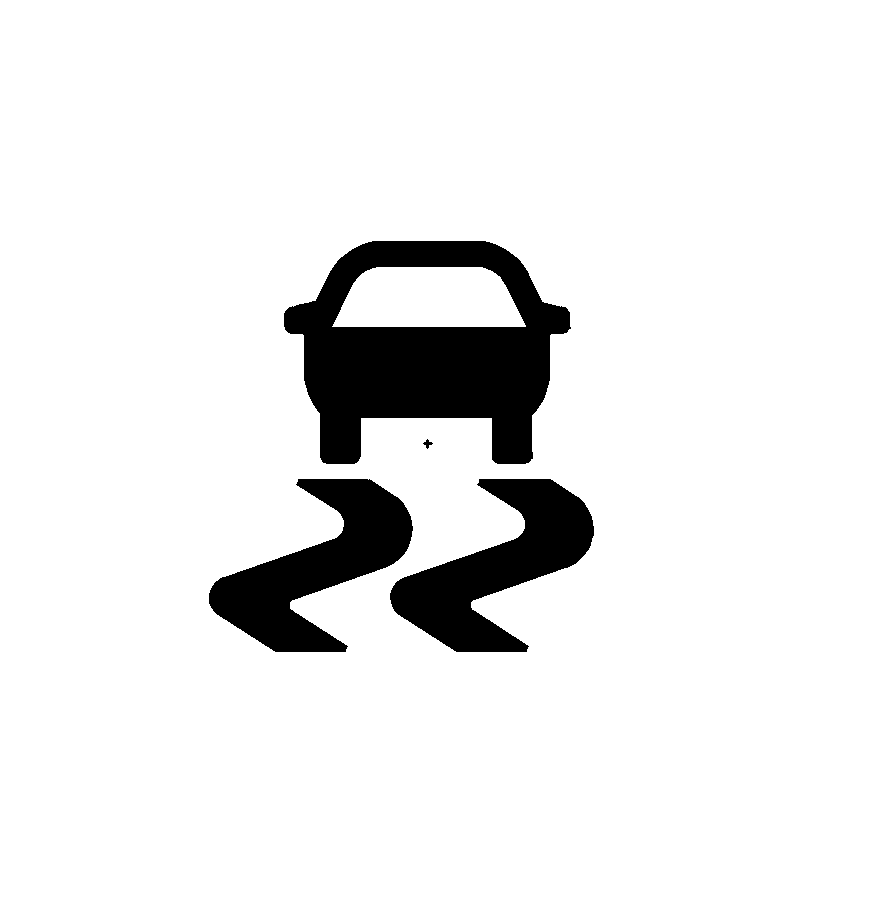If your vehicle has StabiliTrak®, it combines anti-lock brake, traction and stability control systems and helps the driver maintain directional control of the vehicle in most driving conditions.
When you first start your vehicle and begin to drive away, the system performs several diagnostic checks to ensure that it is working properly. You may hear or feel the system working. This is normal and does not mean there is a problem with your vehicle. The system should initialize before the vehicle reaches 20 mph (32 km/h). In some cases, it may take approximately 2 miles (3.2 km) of driving before the system initializes.
The following chart describes the StabiliTrak® not ready light and the StabiliTrak® indicator light.
StabiliTrak® Not Ready Light | StabiliTrak® Indicator Light | Meaning |
|---|---|---|
Off | Off | StabiliTrak® is enabled, but not active. The traction control is not active. |
Off | Flashing | StabiliTrak® is active, or the traction control is active. |
Off | On | StabiliTrak® is disabled due to system fault. When on after restarting, the vehicle needs to be serviced. |
On | Off | StabiliTrak® is disabled due to system initialization or the driver has disabled with switch. |
On | Flashing | StabiliTrak® is not initialized and not disabled. The traction control is active. |
For more information, see StabiliTrak® Not Ready Light and StabiliTrak® Indicator Light .

Pressing and holding the StabiliTrak® button located on the instrument panel for more than five seconds can turn off StabiliTrak® and part of the traction control system.
For your safety, the system can only be disabled when the vehicle speed is less than 20 mph (32 km/h). You will hear three chimes and the StabiliTrak® not ready light will come on.
To turn on the StabiliTrak® system, press the StabiliTrak® button again. StabiliTrak® will automatically turn back on when the vehicle speed exceeds 20 mph (32 km/h). You will hear one chime and the StabiliTrak® not ready light will turn off.
When the StabiliTrak® system has been turned off you may still hear system noises as a result of the brake-traction control coming on.
It is recommended to leave the system on for normal driving conditions, but it may be necessary to turn the system off if your vehicle is stuck in sand, mud, ice or snow, and you want to "rock" your vehicle to attempt to free it. See If Your Vehicle is Stuck in Sand, Mud, Ice, or Snow .
StabiliTrak® System Operation
The StabiliTrak® system is normally on, except when the system is initializing or has been disabled with the StabiliTrak® button. The StabiliTrak® system will automatically activate to assist the driver in maintaining vehicle directional control in most driving conditions. When activated, the StabiliTrak® system may reduce engine power to the wheels and apply braking to individual wheels as necessary to assist the driver with vehicle directional control. If your vehicle is in cruise control when the system activates, the StabiliTrak® indicator light on the instrument panel will flash, and the cruise control will automatically disengage. When the StabiliTrak® system is no longer active, you may re-engage the cruise control. See Cruise Control .
The StabiliTrak® system may also turn off automatically if it determines that a problem exists with the system. If the problem does not clear itself after restarting the vehicle, you should see your dealer/retailer for service.
Traction Control Operation
The traction control system is part of the StabiliTrak® system. Traction control limits wheel spin by reducing engine power to the wheels (engine speed management) and by applying brakes to each individual wheel (brake-traction control) as necessary.
If the brake-traction control system activates constantly or if the brakes have heated up due to high speed braking, the brake-traction control will be automatically disabled. The system will come back on after the brakes have cooled. This can take up to two minutes or longer depending on brake usage.
The traction control system may activate on dry or rough roads or under conditions such as heavy acceleration while turning or abrupt upshifts/downshifts of the transmission. When this happens you may notice a reduction in acceleration, or may hear a noise or vibration. This is normal.
Adding non-dealer/non-retailer accessories can affect your vehicle's performance. See Accessories and Modifications for more information.
